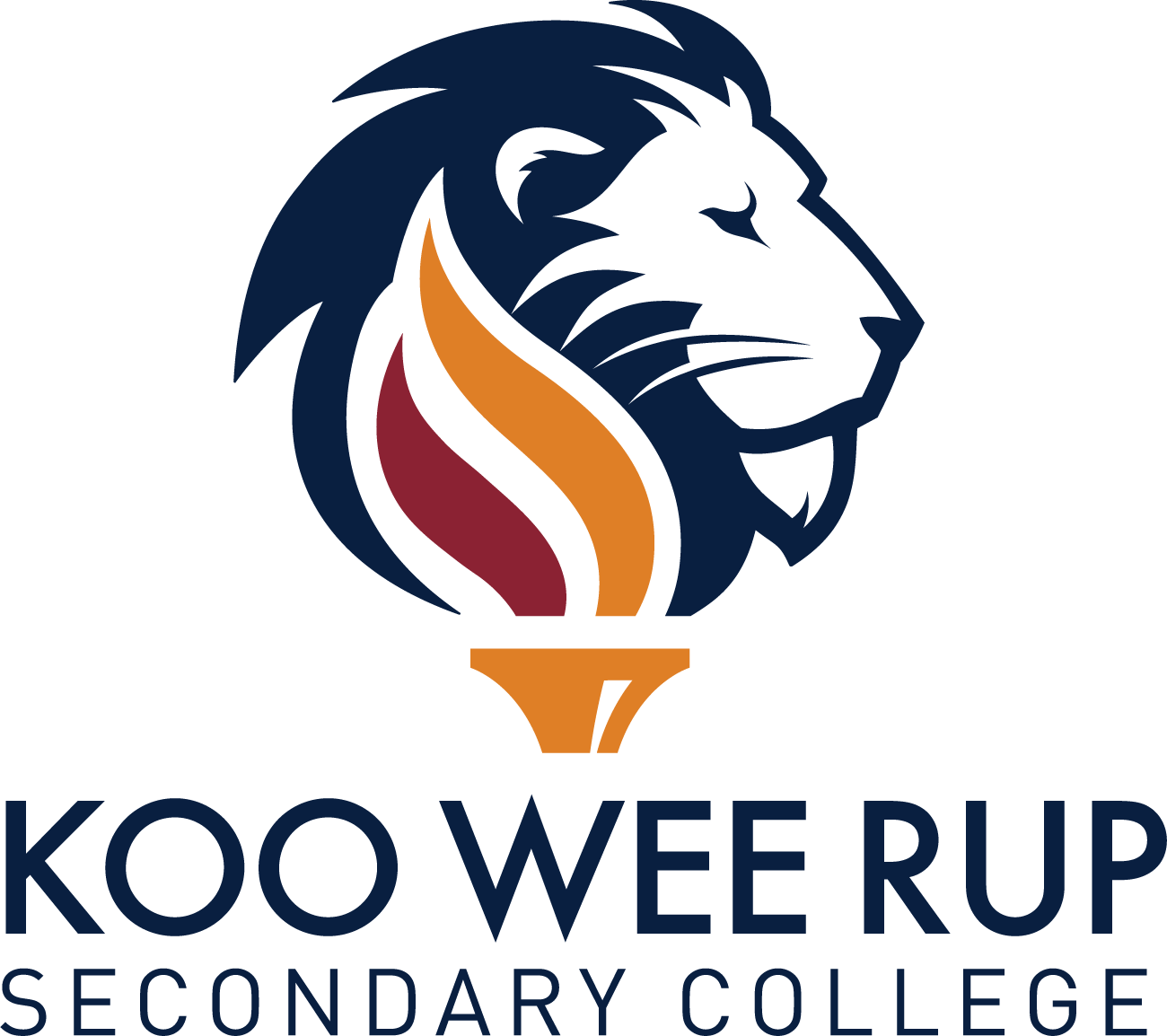The Arts
Home » Domains – Key Areas of Learning » The Arts
At Koo Wee Rup Secondary College we have a variety of Art Programs to suit all types of creative minds. Our aim is to nurture and develop student potential by building:
- confidence, curiosity, imagination and enjoyment through engagement with visual communication design practices
- creative and innovative ways to communicate ideas and information
- aesthetic knowledge, including the application of design elements and principles
- design practices, processes and technologies
- creative, critical and reflective thinking, using visual design thinking skills
- respect for and acknowledgement of the diverse roles and practices of designers, and the cultural context of visual communication design.
The Art units have been planned to give students a greater in depth experience with particular art forms and provide the opportunity for students to study art for the entire year or select the unit which best suits their talents and interests. Students will have increased freedom and input into projects which will allow far more diverse and independent learning to take place. This subject will utilise drawing, painting and painting techniques in a way which enables students to create interesting and visually exciting works of art.
We will explore:
- Drawing techniques (e.g. line drawing and hatching and gridding.)
- Drawing media (e.g. pencil, spray paint, charcoal and collage)
- Acrylic Painting methods and techniques
- Computer generated drawing, freehand drawing and collage.
Photography focuses on introducing students to the use of a DSLR digital camera and the origins of image making. Students will learn how to manually control a camera while exploring a variety of photographic techniques including an exploration of the exposure triangle. Students will also learn about a range of photographers, their techniques and practices.
Key areas of learning include:
- Exploration of light sensitive paper to create Rayographs - Students learn about how light sensitive paper works, how this is connected to film emulsion while also researching the origins of image making pre the digital image.
- Shutter Speed – Students explore and experiment with a variety of tasks developing and challenging their understanding of fast and slow shutter speed, and how this control can impact their image.
- Aperture and Portraiture - Students learn about how aperture contributes to the exposure and focal point of an image through a variety of tasks developed to help students manually control their focal point.
- Exploration of collaging and joiner technique - referencing the artist David Hockney, students will be learning about his ‘joiner’ techniques and trial different ways of photographing a scene then collage their images together.
- Students will learn about a range of photographers such as Lewis Hine, Man Ray, Sally Mann, Tracey Moffatt and more. Students will investigate each photographers' technique, process, and possible meanings and messages evident through analysing their work.
In sculpture students will be developing their understanding of a range of sculptural techniques including assemblage, additive, carving and modelling. During the exploration of techniques, students will be introduced to a variety of materials while also learning about the method of construction. Students will also investigate a range of artists that work within this artform by analysing and interpreting possible meanings and messages in their artworks.
Studio Arts provides a framework for the establishment of effective art practices through an understanding and application of the design process. The theoretical component informs students' practice through an investigation of how selected studio forms have developed; through artists' working methods, professional practices and art industry issues.
Visual Arts includes the fields of art, craft and design. Students create visual art works that communicate, challenge and express their own and others’ ideas. They develop perceptual and conceptual understanding, critical reasoning and practical skills through exploring and expanding their understanding of their world, and other worlds.
They learn about the role of the artist, craftsperson and designer and their contribution to society, and the significance of the creative industries including the roles of critics, curators and commentators.
In Visual Communication Design students use visual communication design knowledge, understanding and skills to communicate ideas and information with a specific purpose.
Students will use visual communication practices and technologies to generate ideas, and develop and refine visual communications. Students develop an appreciation of the means by which others visually communicate ideas and information.
